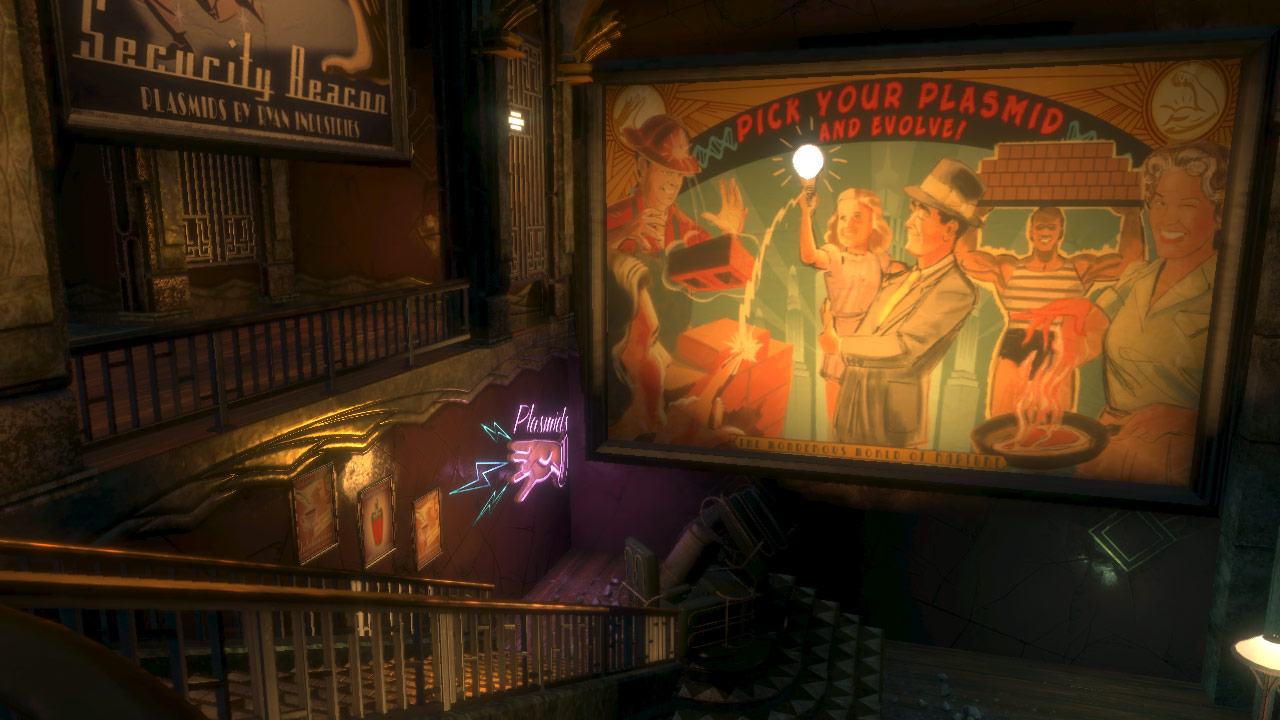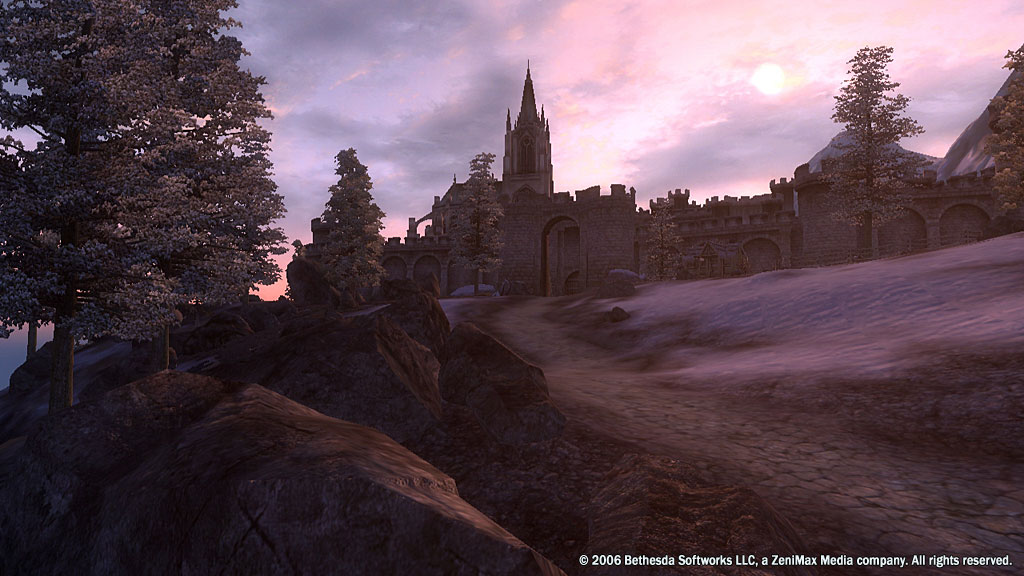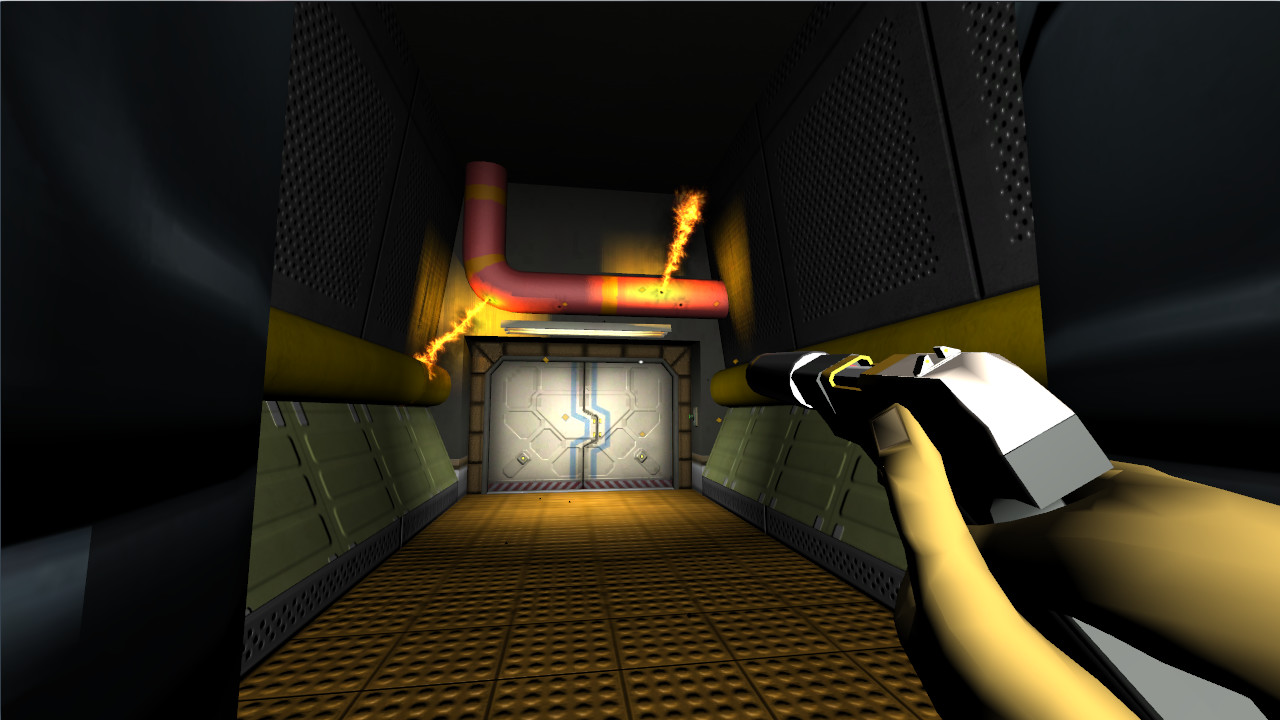Welcome to Waypoint’s End of Year celebration! This year, we’re digging deep into our favorite games with dedicated podcasts, interviewing each other about our personal top 10 lists, and reflecting on the year with essays from the staff and some of our favorite freelance contributors. Check out the entire package right here!
No one really seems to care that Red Dead Redemption 2 is entirely playable in first-person mode. The fact that you can do so in the traditionally third-person game isn’t surprising, I guess. Rockstar’s previous title, Grand Theft Auto V, added first-person mode to the game back in 2014 as a way of sprucing up the game’s port to then-next-gen consoles, and so Red Dead 2 having it probably feels like the continued fulfillment of an obligation. Their last game had it, this game will have it, the next game will have it. The inclusion of the first-person mode has become a part of the bedrock of assumptions that we can make about a Rockstar game going forward.
Videos by VICE
But that moment is one that we should probably be paying attention to. The moment where the layering of decisions, praise, and critique pressurizes into a statement, a fact about the world of video games, is important. The moment something once surprising becomes normal marks a major change in culture. When the way we think about what a “standard” game is shifts, the future of games shift. The future of expectations alter, just slightly, into a parallel world in which not including a first-person mode in a Rockstar game becomes an act of theft, of taking something away, of downgrading the experience. Games culture takes, inch by inch, and relinquishes nothing without a screaming, thrashing fight.
It is hard, though, to see the moments when changes are happening; it’s hard to tell the difference between the actual future of games and a bill of false goods, false potentials. But something is happening to the first-person perspective in games. I can’t put my finger on it, and for that reason this piece is going to feel a bit like reading tea leaves or speaking prophecy to summon a world that might come into being if we want it in just the right ways.
It’s like Walter Benjamin and his constellations: If you can draw the lines and arrange the material in such a way to reveal something, then the revelation was there the whole time just waiting to be found. So we’re going to go down the path of trying to discern the patterns in our shared aesthetic life and see what was always there.

The low-fi horror games Paratopic is probably the most important first-person game this year. It’s signals that shift, a new kind of way of thinking about first-person video games, and I think we’re going to be seeing a lot more of that kind of work over the next several years. The shift is characterized by several different factors, all of which have to do with what these games are adding and subtracting from the toolbox of the first-person video game. Briefly, before digging in:
Subtractions: Gunplay as a necessary part of the mechanics of the game. Clear signaling about the optimal path at all times. Setpieces where the story happens (the funeral, the mass grave, the highway with the collapsing building, the back street with hostiles crowding from the rooftops).
Additions: Ambiguity. Trust in the players. An acceptance of boredom as something to be worked through, not something to be staved off.

To talk about first-person games now requires us to talk quickly about their past. In 1993, we have the release of Doom, a game that takes the first-person perspective and puts it in a guy who rockets through corridors and shoots monsters. This is not the beginning of the first-person perspective in games, but it has the effect of a gravity well: it draws disparate materials toward it.
After Doom, blockbuster aspirations start becoming synonymous with first-person, whether those are shooters or adventure games or something else. Half-Life puts Valve on the map and the game industry on notice in 1998. The immersive sim genre congeals around System Shock 2 in ‘99 and Deus Ex in 2000. Divergent strains of pure shooters, puzzlers, grand warfare experiences, and adventure games swirl in a vortex that is committed to a way of looking at the world inside of a video game through the early 2000s.

2007 brings the blockbuster bombast of both BioShock and Call of Duty 4: Modern Warfare, both of which were trying to jump the canyon that was the genre they were in. Now, whether one thinks that these “corrections” to the genre needed to be made or not is beside the matter, because they made the leap and transformed things. These became, and still are to some degree, the measurement against which first-person games are judged. For their millions of players (and the market which followed them), these games changed what a “standard” game was.
Despite being very different games, what they shared was the first-person perspective and an understanding of the player they wanted to attract. Their ideal player desired smooth controls, absolute clarity on what to do and where to go at any given moment, and a story that was told with bombast that was accompanied with compelling, top-of-the-line visual effects. Credit where credit is due: BioShock and Modern Warfare dunked the ball so hard that the backboard shattered.
And while those games were shaping the future of first person from the shooter genre, they were flanked by games offering new visions of what first person play could look like in other types of games. When Oblivion hit the Xbox 360 in March 2006, a great number of players found themselves wanting bigger, more expansive and story-driven first person adventures—a number that would only increase when Fallout 3 brought supermutants, post-apocalyptica, and (of course) guns to Bethesda’s open world RPG formula in 2008. Elsewhere in 2007, Valve’s Portal was the leaner cousin of the first person boom, introducing many to the possibility of short, focused experiences.

Each of those releases re-grounded what first-person games could or should do. Their existence was their argument, their echo into the industry was their force, and they’ve etched an impact into the games that have come after. They each created a set of assumptions off of which designers could riff and players could compare. For better or worse, they aligned desire, and that desire has constantly evolved over the past twenty years.
The assumptions that these games inserted into the video game space, the kinds of things that they told players so see as quality, still remain relatively unchanged. If the ten years before them were defined by relatively quick iteration and revolution in what first-person games are, the ten years since have stuck relatively closely to what those games we’re doing. We’ve had a whole host of games appear that push on the assumptions of the first-person cluster. Dear Esther, Tacoma, The Stanley Parable, 30 Flights Of Loving, Proteus, Gone Home, Virginia, The Beginner’s Guide, The Magic Circle, and Everybody’s Gone To The Rapture all hold onto pieces of what came before while trying to augment and change things in very specific and delimited ways.
But I think that we’re in a place now where whatever they built is finally going to flip over into something new.

Kitty Horrorshow’s Anatomy is a precursor to 2018. The canary in the coal mine. It’s a haunting game that borrows from the aesthetics of the 1990s, that overflowing period of first-person iteration, to tell a story of domestic horror. Like that laundry list of independent games I listed before, Anatomy is using the first-person perspective to do narrative work as well as be a “good game” in the mold of first-person experiences that have come before.
But where Dear Esther had you walk and ponder while listening to narrative and Virginia has you witnessing a mysterious plot, Anatomy gives you full first-person control, a taped narrative, and the tense fear of tight home spaces. All of these things are working in tandem to create something more than a first-person narrative game, more than a horror game. It’s a new formulation of a genre. New bedrock.

When I asked Jessica Harvey, one of the developers of Paratopic, why she works in the first-person space, she told me that it has to do with creating conditions in which the audience can experience emotional catharsis. She told me that she thinks first-person perspective “inherently reduc[es] aesthetic distance…[while] providing a visceral interface to the world.” For Harvey, this means that “even powerful moments can come from simply stripping away extraneous elements and focusing on simple actions – something we tried several times in Paratopic such as ‘reloading a gun or ‘opening a box’.”
This focus on the small, the minute detail, as the place that provides emotional fulfillment is a far cry from the exploding buildings of a Call of Duty title, but to me the design is informed by those blockbuster games. A decade of destroyed cities and battlefields across every conflict in living memory might have bottomed out what first-person games can do at scale.
Paratopic is powerful to me because it takes the ketchup bottles and the absolute banality of driving at night and fills them with the dread of anticipation. That feeling in Paratopic doesn’t just come from its horror game lineage or its visuals. It is a game that produces a feeling of uneasiness because it’s unsettling the assumptions of the first-person game. A signal of a world to come.

PlayerUnknown’s Battlegrounds created an entire first-person game mode to bring its genre-defining mechanics into alignment with some, but not all, of the assumptions that first-person shooters have created over the past few years. Fallout 76 launched as a broken massive multiplayer survival and base-building game because it apparently thought, for whatever reason, that people would come along as long as things looked like they were going to work out. Subnautica has taken deep-sea adventure and exploration to a whole new level. Horror games, even the Resident Evil franchise, have realized that first-person can do something for them.
I’m listing these things off only to make the point that the swarm of first-person games have a thousand different assumptions and gestures, and in that plurality I see a new strain, a new focus, that’s shaking out from it.
First-person games and their accompanying 3D environments are becoming more possible for more people. The Return of the Obra Dinn has created a new genre of fictional actuarial data collection using the first-person perspective as a critical part of its design. Last year’s Trackless gave us a pilgrimage with special quests along the way that felt like something new. Fugue In Void went full-on artistic perspective warping, with its massive structures and their unwelcoming interiors shaped by stark light and sharp shadow.
If big, broad innovation has stagnated in first-person games at the blockbuster level, then the creation of the new set of bedrock assumptions is happening within independent development and the games that seem to cross into recognition from a broader audience. The world to come is being built from these games that are even further diverging from the formula build in the center of culture.

When I asked Kitty Horrorshow why she uses the first-person perspective in so many of her games, she told me that she wanted players “to feel like they’re there.” Later, in response to a different question, she said this: “I have a tendency to design my games primarily as environments, rather than as structured narrative experiences or whatever, so I default to [first-person] because I want players to feel like they’re ‘visiting’ these places.”
These are related sentiments for me, and they’re emblematic of whatever change has happened over 2018 for first-person games. The design idea that the first-person perspective is a tool to generate a particular feeling of a place instead of a particular way of enacting power is part of how these games are shifting.
Let me unfold that a bit: At the time of the Doom paradigm, through the rise of Deus Ex, and even into BioShock’s era of narrative disempowerment, the first-person game was a useful container because it gave players an immediate relationship to the world. You’re here in the screen, and you can see the things that are important. You can shoot some of those things and, importantly, you can also witness those exploding buildings or detonating nukes in the distance. The first-person spective was useful shorthand for making a world happen around you.

But in the first-person games that have emerged over the past few years, I am seeing something different. The lessons of the Gone Homes and the Dear Esthers have been fully absorbed by the general intellect of the video game world. In Obra Dinn, the perspective is being used to create certain conditions to limit the player, and the game is specifically designed around the fact that you cannot see everything all in one go. You have to navigate your eyes around the world to gather information about it. It’s about learning where to look and what to point the camera at, not about simply following the lines that have been drawn for you by immaculate level design. In Paratopic, the perspective is used to generate the creeping dread of having to go somewhere you might not want to. Of traveling through a hinterland that is beyond your knowledge, and yet you still have to get through it, despite not having a single clue about what your goal might be. And in Horrorshow’s own Ghost Lake from earlier this year, it is a way of forcing players to understand just how damn small they are in the grand scale of terror that they’ve found themselves in.
And this is invigorating for me because the diversity of serious first-person experiences truly is immense. Outside of the major publishers, even the major independent first-person games from the past few years, the true big releases like Firewatch or The Witness, seem fully committed to walking their own walk and doing something other than what has come before. And maybe that’s because even the smallest games in the first-person are able to reap the benefits of what has come before. As Lana Polansky wrote, maybe the era of independent games “stacking the deck to prove how Important Games Are” has passed on into new territory where they simply can be: different, odd, illuminating, banal, quotidian, irregular, unnoticed, unspecial. And those qualities produce conditions in which games can come into their own.

And all of this is simply to say that I think what first-person games “are” is being defined by the margins rather than the center of cultural production. I don’t think the DICE or Treyarch are the arbiters of what the first-person perspective should be doing anymore, and in the waning era of the immersive sim game, expectations can be set from any angle. For me, 2018 was the year where it all started to congeal together. An aesthetic choice on the part of a developer, and all of the gameplay choices that emanate from that choice, have been innovated from independent developers in recognizable ways. I don’t think these are avant garde changes that provide a shock to aesthetics. Instead, these games I’ve talked about have simply boldly iterated on what first-person games do well, and they’ve done so without sticking to the values that the past decade of first-person games have valorized.
But the power of money and prestige and polish is extreme. If 2018 was the year of exciting developments in the ubiquity of first-person (and therefore seeing it producing truly interesting work), then it might also be the last year for that. Obsidian Entertainment’s The Outer Worlds is just around the corner, and Cyberpunk 2077 is likely coming sometime after that. These are both games from companies that create truly compelling story-first games. Like 2018’s independent iterations, these blockbuster games are going to be pressing buttons and pulling levers in the first-person perspective in ways that we haven’t seen before. In the light of these new things, backed by massive expenditure and top-tier creative talent, it’s possible (and even probable) that many will overlook how these independent games broke ground there first. And game history, as it always does, will probably pass over the games of 2018 that I found so compelling.
This piece is prophecy, and it is mythology, and it is an obituary. For the aesthetic changes that we had which found place and stillness and opacity as values for first-person games, and for the fact that profoundly talented designers made those work as well as they have before.
More
From VICE
-

Screenshot: The Game Awards -

Screenshot: EA Sports BIG -

Screenshot: Shaun Cichacki -

AEW
